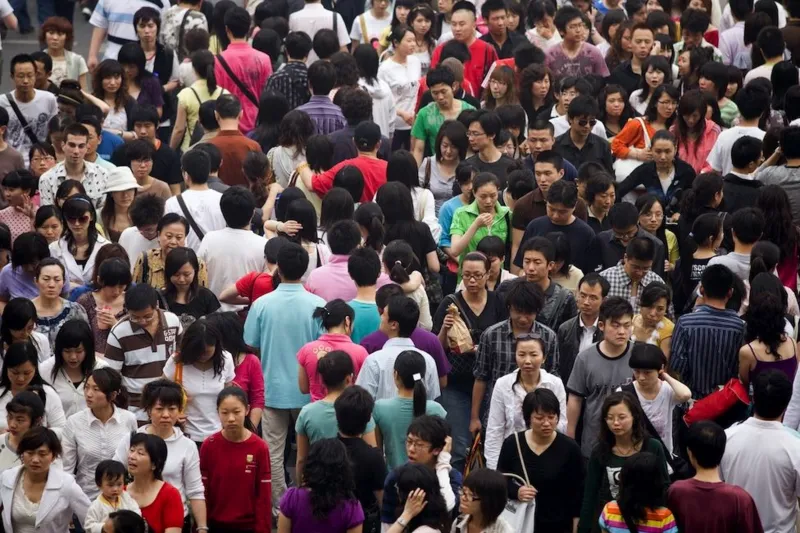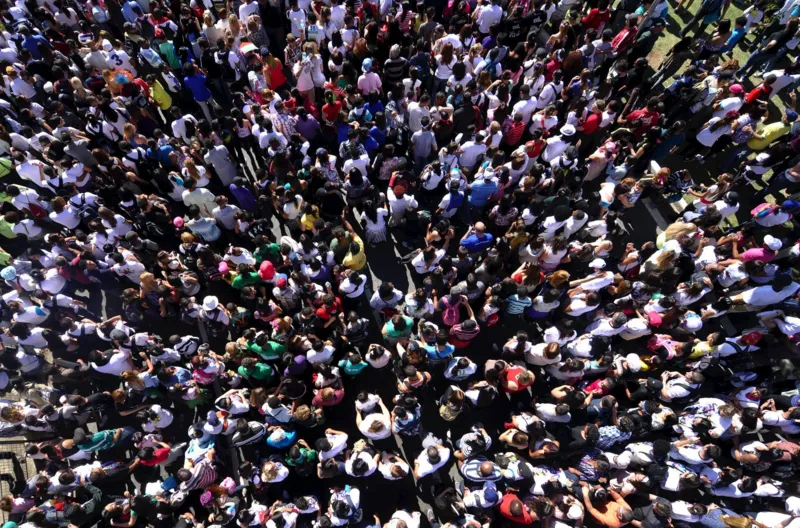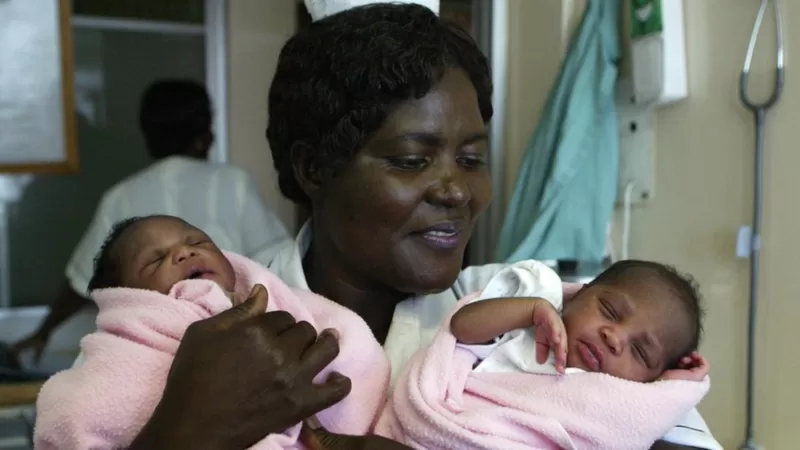November 15, 2022. This is the date on which the Earth is expected to reach 8 billion inhabitants, according to estimates made by the United Nations.
The world’s population will reach 8.5 billion in 2030; 9.7 billion in 2050 and 10.4 billion in the 2080s.
But population growth is not as fast as it used to be.
The United Nations argued that the current rate of growth is the slowest since the 1950s.
Also, the world’s population is expanding unevenly.
More than half of the population growth that will be seen in the next 30 years will occur in just eight countries: the Democratic Republic of the Congo, Egypt, Ethiopia, India, Nigeria, Pakistan, the Philippines and Tanzania.
Some fall, others rise
Some of the most developed economies are already seeing their populations shrink, as fertility rates fall below 2.1 children per woman, which is known as the “replacement rate.”

The United Nations report says that at least 61 countries will reduce their populations by up to 1% before 2050.
With one of the lowest fertility rates in the world (1.15 children per woman), China has announced that its population will begin to decline next year, much sooner than expected.
This despite the country abandoning its one-child policy in 2016 and beginning to give incentives to couples with two or more children.
As India’s population continues to grow, it will almost certainly overtake China as the world’s most populous country.
Fewer children but larger populations
Fertility rates are falling globally, including in many of the countries where populations are expanding.

That’s because as previous generations spread out, more people have children even though they individually have fewer children than their parents.
The growth is also thanks to developments in medicine and science, which mean more children surviving to adulthood and more adults surviving to old age.
This pattern is expected to continue, indicating that global life expectancy will reach 77.2 years by 2050.
This pattern would also indicate a growth in the current percentage of the population aged 65 or over, from 10% to 16% in 2050.
Here the distribution will also be uneven, with regions such as East Asia and Western Europe with greater extremes in the age ranges.
The effects of the changes
The United Nations analysis indicates that a reduction in the percentage of women among the elderly should be seen.

Women have a higher life expectancy than men and currently represent 55.7% of the population aged 65 or over. That percentage could decrease to 54.5% by 2050.
Women live an average of 5.4 years longer than men. In Latin America, the difference is even greater: women live 7 years longer than men, the highest gender difference ever recorded in the world.
In the report, the UN warns that countries must adapt their pension and public health programs under this new scenario with more older people.
The “demographic dividend”
In parts of Latin America, Asia and Africa, the UN notes that the working-age population (25-64 years) continues to grow.
This would give these countries the opportunity to benefit from the so-called “demographic bonus”, which occurs when the population of working age is high compared to the number of children and the elderly who depend on workers or the state for a living.
Experts say that this is a key point to make “a leap in development.”

In the case of Brazil, the population of productive age is at its highest historical point, and the children and elderly who depend on them are at their lowest point.
Another revelation of the report was the impact of immigration in countries where the population grew more than the birth rates.
In the coming decades, immigration will continue to be the engine of population growth in high-income countries.
Some countries will have a drop of 1% or more between 2022 and 2050 precisely because of immigration.

This is because they have low birth rates and because in some cases, people leave these nations. This is the case of Bulgaria, Latvia, Lithuania, Serbia and Ukraine.


















